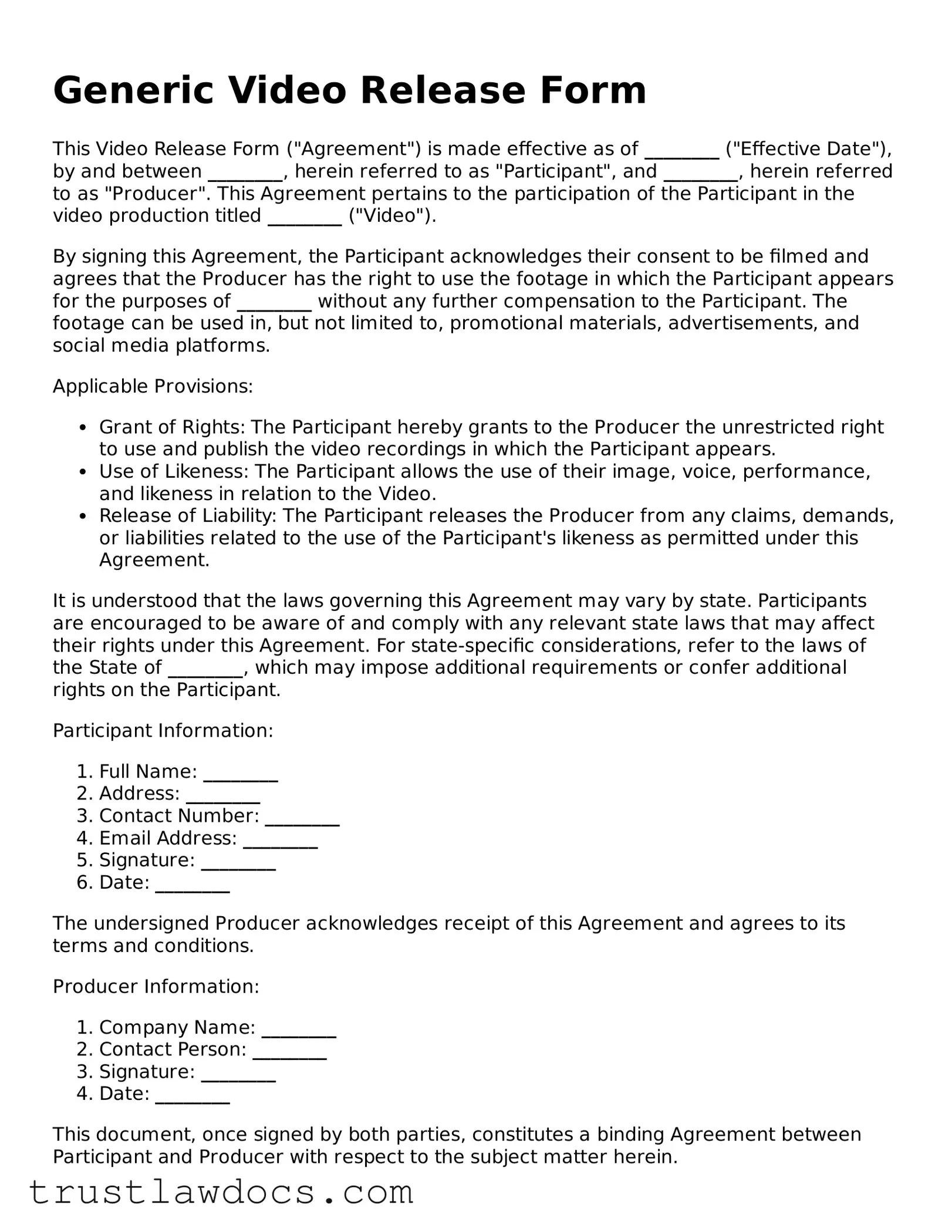What is a Video Release Form?
A Video Release Form is a legal document that grants permission to an individual or organization to use a person's likeness, voice, and overall appearance in a video. This form is essential for protecting both the entity using the video and the individual featured, ensuring that both parties agree on how the video will be used and distributed.
When do I need a Video Release Form?
You need a Video Release Form whenever you intend to capture a person's appearance, voice, or both in a video that will be used for any purpose beyond personal use. This covers a wide range of uses from commercial to educational, promotional, or even artistic projects. It is especially critical if the video will be publicly broadcasted or distributed.
What happens if I don't use a Video Release Form?
Not using a Video Release Form can lead to various legal challenges. The person in the video might object to how they are portrayed or to where and how the video is being used. Without their written consent, they might have the grounds to sue for compensation or to demand the video's removal. This could result in financial losses and damage to the reputation of the individual or organization involved.
What information should be included in a Video Release Form?
A thorough Video Release Form should include the name and contact information of the party granting permission (the releasor), the name and contact information of the party receiving permission (the releasee), a clear description of the video and how it will be used, any compensation (if applicable), and the date and signatures of all involved parties. It may also detail any specific limitations or conditions of the video's use.
Can a minor sign a Video Release Form?
A minor cannot legally sign a Video Release Form. In situations involving individuals under the legal age of majority, a parent or legal guardian must sign the form on their behalf, granting the required consent for the video's use.
Is a Video Release Form legally binding in all states?
While the basic principles of a Video Release Form are recognized across the United States, there can be variations in specific requirements from one state to another. It's advisable to ensure that the form adheres to state-specific laws where the video will be used or distributed to guarantee its enforceability.
Can the terms of a Video Release Form be modified after signing?
Yes, the terms of a Video Release Form can be modified after it has been signed, but any changes must be agreed upon by all parties involved. This typically involves drafting a new agreement or an amendment to the original form, which must then be signed by both the releasor and the releasee to be valid.
